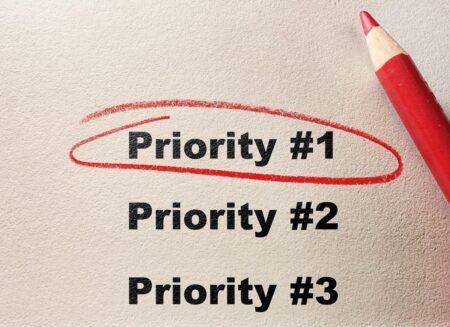Creating a budget is an essential step in achieving and maintaining financial health. Without a clear understanding of where your money is going, overspending becomes too easy, leaving many people feeling like they’ll never gain control of their finances. However, budgeting isn’t just about limiting your expenses; it’s about designing your financial future and taking active steps toward your goals. Whether you favor spreadsheets, apps, or pen and paper, the method doesn’t matter as much as the discipline to start and stick with budgeting.
We’ll walk through the basics of creating a personal budget, examine different tools, and explore practical tips to help you maintain control.
Viewing a Budget as Freedom, Not Restriction
Before creating a budget, it’s crucial to start with the right mindset. Many of us approach budgeting the way we view dieting—with dread and a sense of restriction. However, this mindset can make sticking to your financial plan harder. To truly succeed, you need to reframe how you think about budgeting. Rather than seeing it as something that limits you, consider budgeting as a tool that gives you freedom.
For example, when people hear the word “diet,” it often conjures images of sacrificing all the foods they love, leading them to abandon the effort entirely. On the other hand, adopting a “lifestyle change” feels empowering because it’s about adding value to your life—more energy, improved health, and greater balance. Similarly, a budget isn’t about depriving yourself of all joys but about aligning your spending with the things that genuinely matter to you. It allows you to prioritize, save for your goals, and say no to unnecessary expenses without guilt.
Budgeting also has the power to ease financial anxiety. Often, our concerns about money stem from a lack of clarity. We rely on mental accounting—estimating in our minds how much we’ve spent or earned—which is often inaccurate. Seeing the numbers in black and white can feel like a breath of fresh air. It’s no longer about vague worries of “Am I overspending?” or “Where is my money going?” Instead, it’s about making decisions based on facts and confidently moving forward.
When you shift your perspective, you’ll see budgeting as a way to create stability and reduce stress. It’s not about what you’re giving up; it’s about gaining the freedom to focus on what brings fulfillment. Just as a fitness routine keeps your health on track, a well-thought-out budget ensures your finances stay healthy, and your future goals remain within reach.
Four Pillars of a Solid Budget
Regardless of your tools or approaches, every effective budget involves understanding four key components, which form the foundation of your financial planning process.
Know Your Budget Income
The first step is understanding how much you earn. Write down all sources of income you receive monthly. This includes wages, side hustle earnings, child support, rental income, and other monetary inflows. Once you see the total, evaluate whether your current income comfortably supports your lifestyle. If it doesn’t, that’s a red flag. But don’t panic—this clarity develops as you progress.
Track Your Budget Expenses
Next, document all your monthly expenses. Start with essentials like rent or mortgage payments, utilities, groceries, and insurance. Then, add discretionary expenses such as entertainment, gym memberships, or subscriptions. This step requires thoroughness. Categorizing your spending can be especially helpful. For guidance, I recommend spending percentages with my clients. For example:
- Housing: 25–35% of income
- Transportation: 10–15%
- Savings: 5–10%
- Food: 5–15%
- Recreation: 5–10%
These benchmarks may vary based on your circumstances (e.g., high housing costs in certain areas, other cost of living and lifestyle variations, etc.), but they serve as helpful starting points. For example, earning $3,000 monthly and spending $1000 on housing is about 30% of your income—within range. These percentages allow you to see if your spending aligns with your financial priorities.
Assess Your Debts
Debt can feel overwhelming, but acknowledging it is the first step toward regaining control. List every debt, from credit cards and student loans to personal loans or overdue bills. If it appears on your credit report, it qualifies as debt. You can pull your government-mandated free credit report or use other popular tools to check. Facing your debt might bring discomfort, but remember that this exercise is about empowerment. Awareness allows you to create a plan to tackle it.
Create Your Budget Strategy
Now comes the pivotal moment—organizing your budget. Look back at your expenses. Are there areas where you can cut back? Start with discretionary spending, like dining out or unused subscriptions. Tightening these areas creates room to reallocate funds toward savings, debt reduction, or any other financial goal.
Be sure to evaluate your financial goals.
- Saving for retirement?
- Building an emergency fund?
- Paying off high-interest debt?
Ensure your spending and saving habits align with those objectives. Remember, budgeting often requires sacrifices in the short term to build long-term wealth. The question is, how badly do you want the financial freedom that lies ahead?
If cutting non-essentials still leaves your budget in the negative, an income issue may be at play. Supplemental income sources, such as part-time work or freelancing, could help bridge the gap. What are you gifted at? There is probably someone who will pay you for it.
Budgeting Tools and Techniques
How you budget is entirely up to you. Lifestyle, personality, and preference will influence the tools you find most effective. Each method has strengths and drawbacks—what matters is finding one that keeps you consistent.
There are three popular options:
Budget Spreadsheets
Spreadsheets allow you to engage directly with your finances. Using software like Excel or Google Sheets, you can customize a budget to meet your unique needs. Use built-in formulas to track your income and expenses while categorizing your spending.
Pros
- Highly customizable
- Easy to adjust and manipulate data
- Accessible templates available online
Cons
- Requires basic spreadsheet knowledge
- Not mobile-friendly without cloud access
- Can appear complex for beginners
Budget Planners or Worksheets
Budget worksheets are simple and effective for those who prefer manual methods. Many templates are available online for download and printing, or you can create your own by following the steps outlined above.
Pros
- Simple and straightforward
- Writing things down can reinforce commitment
- Low-tech and inexpensive
Cons
- Manual calculations take time
- More challenging to maintain consistency without digital tracking
Budget Apps
Mobile budgeting apps take a modern approach to budgeting. Many can sync directly with your bank accounts to automate tracking and categorization. You can find a myriad of options in your app store.
Pros
- Convenient for on-the-go usage
- Automatic tracking features reduce manual input
- Alerts and analytics provide real-time insights
Cons
- Some apps require subscriptions
- Interface learning curves may exist
- Can become easy to ignore if overwhelmed by notifications
Budgeting Rules to Simplify Financial Decisions
If you struggle with getting into the weeds of budgeting, you can use a rule to simplify it. There are ways to make budgeting easier for everyone if it’s your goal.
The 50/30/20 Budget Rule
This method divides income into three categories: 50% for needs, 30% for wants, and 20% for financial goals. It’s simple and ideal for those who want broader categories.
The 70/20/10 Budget Rule
This method allocates 70% of income to essential spending, 20% to savings or investments, and 10% to debt repayment or donations. Those prioritizing debt reduction might find this approach less ideal if the allocation feels limiting.
Use these frameworks as guidelines, but remember, they are not one-size-fits-all. Adjust them based on your unique financial goals. You have to make any strategy or tool you use your own.
Final Thoughts
Budgeting isn’t about restriction—it’s about empowerment. By understanding your income, expenses, and goals, you’ll develop a strategy to optimize your finances. Whether you choose a spreadsheet, a planner, or a smartphone app, the most important step is to start. Over time, budgeting becomes second nature, and its visibility into your financial life unlocks new growth opportunities.
A well-managed budget is more than just a tool—it’s the foundation for building and sustaining wealth. Take control now; you’ll be surprised by how far discipline and focus can take you.
Read the full article here











